At the end of the 2019/20 season, few NBA franchises appeared to be in a worse spot than the Hornets, who won just 23 games, missed the playoffs for a fourth straight seasons, and didn’t have any young players with legitimate star upside on their roster.
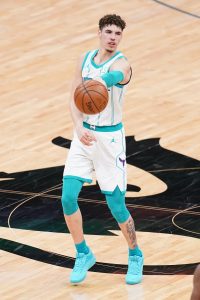 The Hornets didn’t snap their playoff drought in 2021, but a year later, their outlook is considerably brighter. That turnaround can be attributed in large part to nailing the No. 3 pick in the 2020 draft. LaMelo Ball became the NBA’s Rookie of the Year and looks like the best bet of any 2020 draftee to eventually make an All-Star team.
The Hornets didn’t snap their playoff drought in 2021, but a year later, their outlook is considerably brighter. That turnaround can be attributed in large part to nailing the No. 3 pick in the 2020 draft. LaMelo Ball became the NBA’s Rookie of the Year and looks like the best bet of any 2020 draftee to eventually make an All-Star team.
Charlotte also added forward Gordon Hayward on a four-year, $120MM contract during 2020’s free agent period. The deal was widely viewed as an overpay, and it’s possible the Hornets will end up regretting it in a year or two. Still, it was an encouraging sign that the franchise was able to land one of the summer’s top free agents, beating out the Pacers and Knicks, among others.
Ball and Hayward both missed time due to injuries in 2020/21, but the club still earned a play-in spot in the East and has the flexibility to continue upgrading its roster this summer. The Hornets aren’t exactly legit contenders yet, but things in Charlotte don’t look as bleak as they did at this time last year.
The Hornets’ Offseason Plan:
The Hornets will face important decisions on free agent guards Malik Monk and Devonte’ Graham, both of whom are eligible for qualifying offers that would make them restricted FAs. Both Monk and Graham have value, and ideally Charlotte wouldn’t let them get away for nothing, but Ball’s emergence and Terry Rozier‘s impressive performance in 2020/21 have given the team some options. If Monk, for instance, needs to be renounced to open up some cap room, there’s enough backcourt depth on the roster to withstand the loss.
Besides addressing the backcourt, the Hornets will prioritize the center position. Cody Zeller and Bismack Biyombo are headed to unrestricted free agency, and while it’s possible the club will look to bring one of them back as a reserve on a modest contract, Charlotte will be aiming higher in its search for frontcourt help.
Richaun Holmes, Andre Drummond, and Nerlens Noel are among the players the Hornets could pursue in free agency. The trade market offers some intriguing options as well, including Pacers center Myles Turner, who has frequently been linked to Charlotte and could once again be on the trade block this offseason. Getting a player who can knock down threes like Turner would be great, but the Hornets really just need someone who can protect the basket on defense and be a rim-running partner for Ball on offense.
Rozier and Miles Bridges are the Hornets’ two most notable extension-eligible players. The team’s decision on Rozier may be tied to how Graham’s free agency plays out — if Graham returns, it would cast more uncertainty on Rozier’s long-term future with the franchise. Bridges, meanwhile, looks like a keeper on the wing, and I imagine Charlotte will try to sign him to an extension this offseason if the price is right.
Salary Cap Situation
Note: Our salary cap projections are based on a presumed 3% increase, which would result in a $112.4MM cap for 2021/22.
Guaranteed Salary
- Gordon Hayward ($29,925,000)
- Terry Rozier ($17,905,263)
- Nicolas Batum ($9,043,478) — Waived via stretch provision.
- LaMelo Ball ($8,231,760)
- Miles Bridges ($5,421,493)
- P.J. Washington ($4,215,120)
- Vernon Carey ($1,517,981)
- Nick Richards ($1,517,981)
- Total: $77,778,076
Player Options
- None
Team Options
- None
Non-Guaranteed Salary
- Caleb Martin ($1,782,621) 1
- Cody Martin ($1,782,621) 2
- Jalen McDaniels ($1,782,621) 3
- Total: $5,347,863
Restricted Free Agents
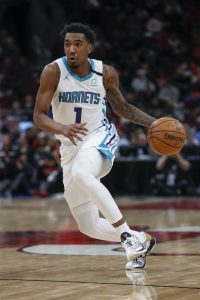 Malik Monk ($7,031,451 qualifying offer / $16,037,061 cap hold): Bird rights
Malik Monk ($7,031,451 qualifying offer / $16,037,061 cap hold): Bird rights- Devonte’ Graham ($4,736,102 qualifying offer / $4,736,102 cap hold): Bird rights
- Brad Wanamaker ($2,812,500 qualifying offer / $2,812,500 cap hold): Non-Bird rights
- Total (cap holds): $23,585,663
Two-Way Free Agents
Draft Picks
- No. 11 overall pick ($4,154,400)
- No. 56 overall pick (no cap hold)
- No. 57 overall pick (no cap hold)
- Total: $4,154,400
Extension-Eligible Players
- Miles Bridges (rookie scale)
- Caleb Martin (veteran)
- Cody Martin (veteran)
- Jalen McDaniels (veteran)
- Terry Rozier (veteran)
Unrestricted Free Agents / Other Cap Holds
- Cody Zeller ($23,123,595): Bird rights
- Bismack Biyombo ($6,650,000): Bird rights
- Total: $29,773,595
Offseason Cap Outlook
The Hornets will likely dip below the cap this offseason, especially if they don’t re-sign Monk, or bring him back on a salary far below his $16MM cap hold.
If Charlotte were to renounce Monk, bring back the three players with non-guaranteed salaries, and account for cap holds for Graham and the No. 11 pick, they could create more than $20MM in cap room. Waiving some of the non-guaranteed money would bump that figure up slightly, while re-signing Monk would cut into it.
Cap Exceptions Available
- Room exception: $4,910,000 4
Footnotes
- Martin’s salary becomes fully guaranteed at some point in mid-August (exact date TBD).
- Martin’s salary becomes fully guaranteed at some point in mid-August (exact date TBD).
- McDaniels’ salary becomes fully guaranteed at some point this summer (exact date TBD).
- This is a projected value. If the Hornets operate over the cap, they’d have the mid-level exception ($9.5MM) and the bi-annual exception ($3.7MM) available.
Salary and cap information from Basketball Insiders, RealGM, and ESPN was used in the creation of this post
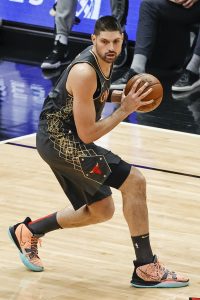 But the team aimed higher. Firmly in the play-in mix more than halfway through the season, the Bulls’ new top decision-makers decided to take a big swing, sending a pair of future first-round picks and former lottery selection
But the team aimed higher. Firmly in the play-in mix more than halfway through the season, the Bulls’ new top decision-makers decided to take a big swing, sending a pair of future first-round picks and former lottery selection 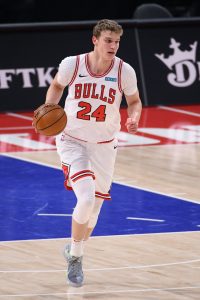
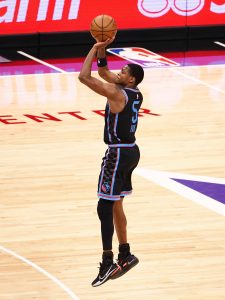 draft, was a revelation, averaging 13 PPG, 5.3 APG, and 1.3 SPG while shooting above 40% from three in 30 MPG. His stellar play earned him a berth on the All-Rookie First Team.
draft, was a revelation, averaging 13 PPG, 5.3 APG, and 1.3 SPG while shooting above 40% from three in 30 MPG. His stellar play earned him a berth on the All-Rookie First Team. 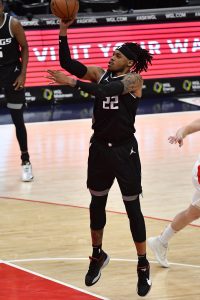
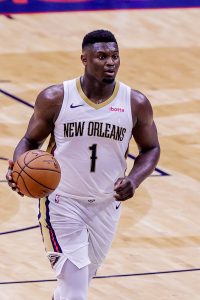 The idea was that the Pelicans weren’t giving up on their goal of making the playoffs in 2021 by trading Holiday, since they were getting two productive veterans in the deal — they even extended Adams as part of the trade, locking him up for two extra seasons.
The idea was that the Pelicans weren’t giving up on their goal of making the playoffs in 2021 by trading Holiday, since they were getting two productive veterans in the deal — they even extended Adams as part of the trade, locking him up for two extra seasons.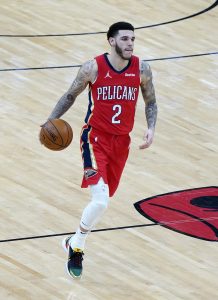
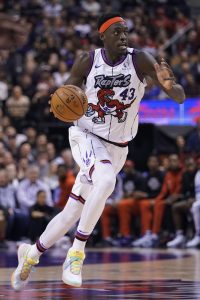 A number of factors contributed to the Raptors’ plunge down the standings. The team lost
A number of factors contributed to the Raptors’ plunge down the standings. The team lost 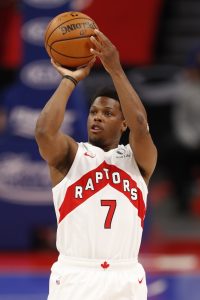
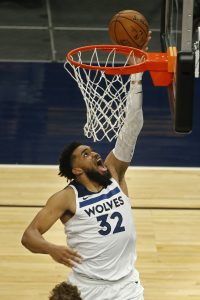 As was the case in 2019/20 though, Russell and franchise player
As was the case in 2019/20 though, Russell and franchise player 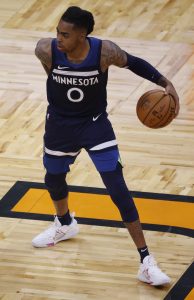
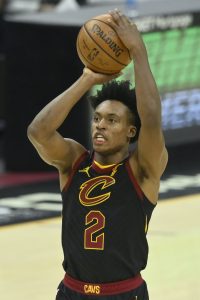 The Cavs have had no shortage of lottery luck over the years, winning the No. 1 pick in 2003, 2011, 2013, and 2014. But the team hasn’t picked in the top four since its latest rebuild began, and as a result hasn’t landed a clear-cut franchise player to build around.
The Cavs have had no shortage of lottery luck over the years, winning the No. 1 pick in 2003, 2011, 2013, and 2014. But the team hasn’t picked in the top four since its latest rebuild began, and as a result hasn’t landed a clear-cut franchise player to build around.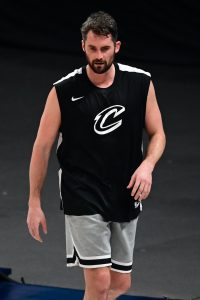
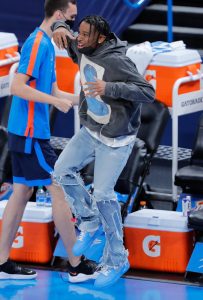 An injury limited star point guard
An injury limited star point guard 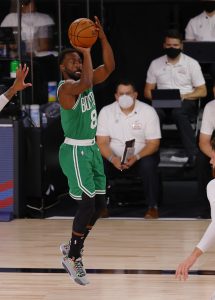 Williams, Roby and Deck all played well for the Thunder this season and seem likely to have their contracts guaranteed. The cap hold for the Thunder’s first first round pick is likely to be in $5.5MM-$8.3MM range. If the Thunder want to use cap space to throw a lucrative offer at a restricted free agent, they will have to renounce their exceptions.
Williams, Roby and Deck all played well for the Thunder this season and seem likely to have their contracts guaranteed. The cap hold for the Thunder’s first first round pick is likely to be in $5.5MM-$8.3MM range. If the Thunder want to use cap space to throw a lucrative offer at a restricted free agent, they will have to renounce their exceptions.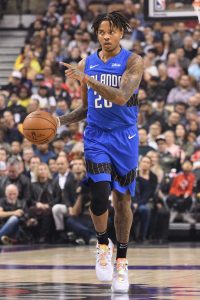 After a solid 6-2 start, the Magic cratered, falling to 13-27 by mid-March. That was around the time that top basketball executives Jeff Weltman and John Hammond decided a full-fledged teardown was in the franchise’s best long-term interests.
After a solid 6-2 start, the Magic cratered, falling to 13-27 by mid-March. That was around the time that top basketball executives Jeff Weltman and John Hammond decided a full-fledged teardown was in the franchise’s best long-term interests.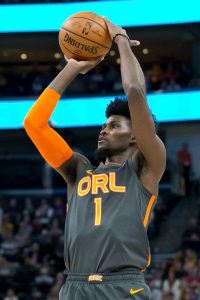
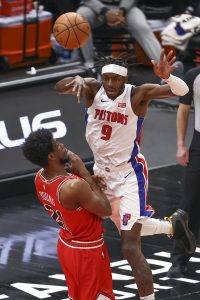 The rebuilding Pistons signed non-star veteran free agents like
The rebuilding Pistons signed non-star veteran free agents like 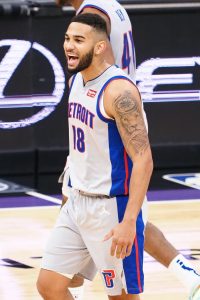 Cory Joseph ($10,200,000) 1
Cory Joseph ($10,200,000) 1